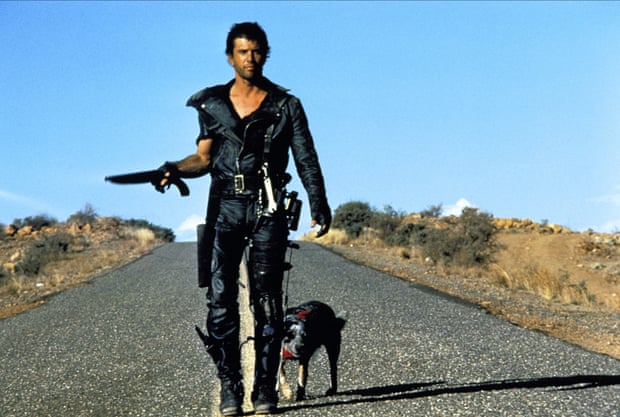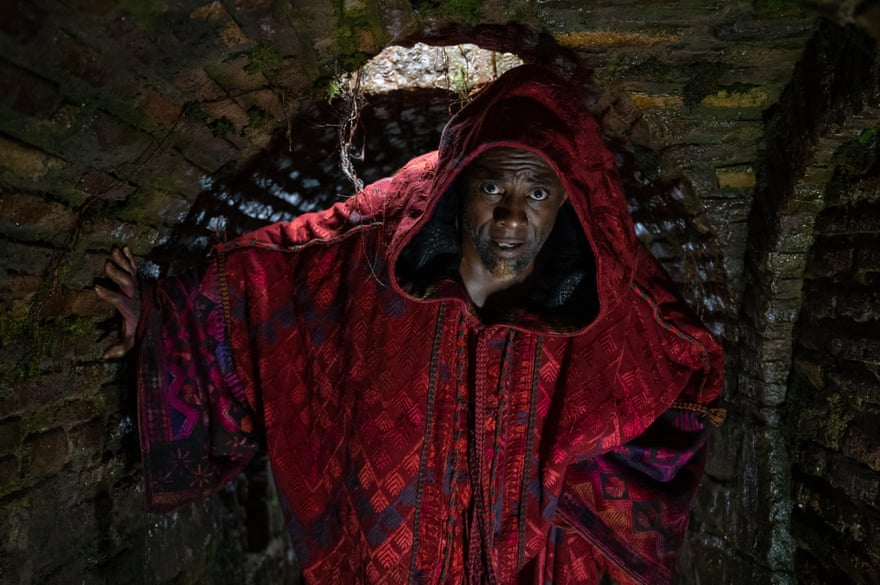Stop me if I’m rambling, says the director George Miller, perched on his stool like some saloon-bar raconteur, half-drunk on the joys of film history and lit theory. He has covered Buster Keaton and Joseph Campbell, indigenous art and the Queen of Sheba. He says we don’t even know whether the Queen of Sheba was real, but she’s real in the legends and what’s more real than a tale? “We’re creatures of story, we’re hardwired for story. That’s how we make sense of the world.”
Miller – soft-spoken and stocky; 77 as of last March – is best known for his dystopian Mad Max pictures, but his CV is eclectic and he has tackled all sorts. Tearjerkers (Lorenzo’s Oil, 1992), comedies (The Witches of Eastwick, 1987), kids’ capers (Happy Feet, 2006; Babe, 1995), you name it. Most good movies, he reckons, come from a similar place. Look closely enough and you start to see links and bridges; the wider pattern.
“Let’s go back to Babe,” he says, warming to his theme. “The first thing that struck me when I read the children’s book by Dick King-Smith was that it was very clearly a hero’s journey. Babe is the agent of change. He relinquishes self-interest for the greater good. But when I said this, people were aghast, they looked at me like I was crazy. They said: ‘But George – it’s a talking pig.’”
We are in the wings of the Cannes film festival. Miller is here for the premiere of Three Thousand Years of Longing, his latest change-of-pace whiplasher that may turn out to be part of a wider pattern. Based on an AS Byatt novella, it is a fairytale romance so earnest and open-hearted that it all but dares the viewer to laugh at it. Three Thousand Years of Longing stars a pointy-eared Idris Elba as the mystical Djinn and a bespectacled Tilda Swinton as a lonesome professor. The Djinn says that he can grant the professor a wish. But she is too savvy, too wary; she keeps second-guessing herself. “This wishing is a hazardous art,” she complains.
What would Miller’s wish be if he ran into a djinn? Argh, he says, he doesn’t know. The Djinn can’t grant immortality or end human suffering. Everything else would probably wind up feeling weird. “Let’s imagine I want to win the 100-metre dash and break the record at the Olympics. So I make that wish and I go and do it. It would mean nothing because it’s unearned, it’s hollow.” He thinks some more. “So I wish for my film to play really well at Cannes tonight. But if it doesn’t, that’s OK – it’s a problem of the work.”
Miller was brought up in Queensland, Australia, by Greek immigrant parents, and for a time in his 20s he was leading two lives like Clark Kent: working as a doctor at St Vincent’s hospital in Brisbane one week, shooting his low-budget pictures the next. But naturally, he says, there was a pattern here, too.
“Oh, I definitely would not be making films in the way I make them had it not been for medical school. First of all, it’s all about point of view. As a doctor, you’re looking at the complete human being, down a microscope or on an X-ray or as part of a collective. Viscerally, intellectually, spiritually, anthropologically. And then, on a practical level, it’s invaluable. The first night-shoot reminded me of night sessions on emergency. Problem solving. Thinking on your feet. Never knowing what was coming through the door. So I had a lot of practice before I went on a movie set.”
Miller made his first Mad Max picture in 1979, casting a pre-stardom Mel Gibson as law enforcement’s last soldier and dressing the suburbs of Melbourne as a post-apocalyptic wasteland. The film was a smash and it made Miller’s career. And this was surprising to him because he assumed that he had blown it.
“The film was a complete disaster to me in terms of what I wanted to do,” he recalls. “I really thought I wasn’t cut out to make films. My partner, Byron Kennedy, and I had raised a pretty meagre budget from our closest friends from school. So there was an obligation to get them back their money. It was a terrible thing if we didn’t do it. We had no money for an editor, so I cut the film myself for a year. And every day for a year I was faced with the evidence of what I hadn’t done, what I’d failed to do. Why did I put the camera there? Why didn’t I ask the actors to go faster? Every day facing this film, this wreck.”

Apologies, he says. He’s started rambling again. Long story short, the film was released and different audiences projected their own myths upon it. “In Japan, they saw it as a samurai film. The French called it a western on wheels. In Scandinavia, it was a Viking movie. And I was smart enough to know that this wasn’t as a result of anything I’d done consciously. If the work had gone smoothly I might have fallen victim to hubris.”
Miller went on to shoot two Mad Max sequels in the 80s. In 2015, he resurrected the concept for the thunderous Fury Road. Now he’s working on Furiosa, a Fury Road origins tale, with Anya Taylor-Joy in the old Charlize Theron role. This, I tell him, is the most obvious pattern. The director might flirt with djinns and penguins and talking pigs, but Mad Max is his first love, his life’s work. Or is that too big a claim?
“Too big!” he says. The only Mad Max spin-off he ever deliberately planned to make is Furiosa, the new one, just because it seemed to make total sense. All the others, he insists, were happy accidents or sudden arrivals, like those patients who blew through the emergency room door. “It’s like John Lennon says: life is what happens when you’re making other plans. I have all kinds of other plans. But somehow I keep going back to Mad Max.”
Here’s a question a djinn might ask. Does Miller think he has been of more value to the world as a film-maker than he would have been as a doctor?
“Oh,” he says. “Well, I think I have a bit of authority to answer this one. Because I have a twin brother, John, who I went through medical school with – and he’s still practising. He’s about to retire at the end of this year. And he’s a really excellent doctor. I’m not saying that because he’s my brother. He’s everything you’d wish for in a doctor. He’s treated three generations of the same family. Expats come back to Australia to see him. He’s involved in community health, in preventing diseases. I would not have been anywhere near the doctor that he is. I would have been OK. But not compared to him.”

The publicist needs to wrap things up. Miller waves her away; he is still chewing over this one. “The only way I can justify it, what I do, is that there’s a social obligation in telling stories,” he says. “So, I would hope that people get some value out of them. And it’s happened to me twice – once in the US and once in Australia, where a young woman has come to me and said: ‘I’ve just had a baby girl and I want to call her Furiosa.’ So, maybe that means something.” He grimaces. “But can that be balanced up against the work of my brother? I don’t know. Probably not.”
It’s funny, he says. The last person who asked him anything remotely like this was his father, 50 years ago, when he dropped out of medical school. “‘Why do you want to give up medicine to make movies? Isn’t medicine better?’” Miller didn’t have a good answer for his dad that day. He is not altogether convinced that he has one now. “So that’s the real life’s work,” he says. “Five decades thinking about that one question.”

